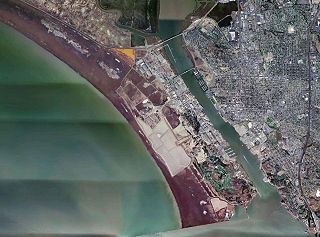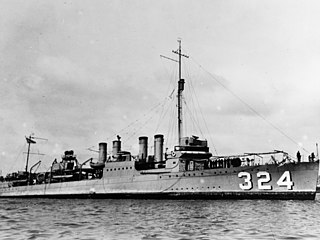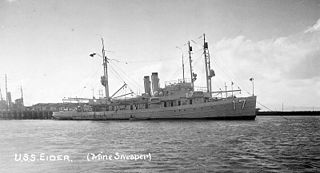Mare Island is a peninsula in the city of Vallejo, California.
Mare Island may also refer to:
- Mare Island Naval Shipyard, a former naval base on California's Mare island
- Mare Island (Indonesia), a volcano
- Maré Island, an atoll in the Loyalty Islands
Mare Island is a peninsula in the city of Vallejo, California.
Mare Island may also refer to:

The Mare Island Naval Shipyard (MINSY) was the first United States Navy base established on the Pacific Ocean. It is located 25 miles (40 km) northeast of San Francisco in Vallejo, California. The Napa River goes through the Mare Island Strait and separates the peninsula shipyard from the main portion of the city of Vallejo. MINSY made a name for itself as the premier U.S. West Coast submarine port as well as serving as the controlling force in San Francisco Bay Area shipbuilding efforts during World War II.

USS Grayback (SS/SSG/APSS/LPSS-574), the lead ship of her class of submarine, was the second ship of the United States Navy to be named for the grayback.

USS Stickleback (SS-415), a Balao-class submarine, was named for the stickleback, a small scaleless fish.

Mare Island is a peninsula in the United States in the city of Vallejo, California, about 23 miles (37 km) northeast of San Francisco. The Napa River forms its eastern side as it enters the Carquinez Strait juncture with the east side of San Pablo Bay. Mare Island is considered a peninsula because no full body of water separates this or several other named "islands" from the mainland. Instead, a series of small sloughs cause seasonal water-flows among the so-called islands. Mare Island is the largest of these at about 3.5 miles (5.6 km) long and a mile wide.
Navy Yard may refer to:

USS Marion was a sloop-of-war of the third rate in the Union Navy during the American Civil War launched at the Boston Navy Yard on 24 April 1839. On 10 November 1839, she departed Boston on her first cruise, to Brazil. Sunk when heaved down in the harbor at Rio de Janeiro early in 1842, she was raised and sailed back to Boston, arriving in May. She then set sail for the Caribbean, returning in May 1843. For the next few years, she remained in ordinary at Boston and then cruised off the West Coast of Africa and in the Mediterranean until 1848. She captured the Casket, a slaver, near Cabinda on 2 August 1846. After a tour in the East Indies from 1850–52, she resumed operations with the African Squadron from 1853–55 and 1858-60, capturing three more slaving ships: Brothers off Mayumba on 8 September 1858 and Orion and Ardennes in late April 1859 off the coast of Kongo. 1856-57 was spent in ordinary at Norfolk.

USS S-9 (SS-114) was a second-group S-class submarine of the United States Navy. Her keel was laid down on 20 January 1919 by the Portsmouth Navy Yard. She was launched on 17 June 1920 sponsored by Mrs. James E. Palmer, and commissioned on 21 February 1921 with Lieutenant Commander Thomas Shine in command.

USS S-17 (SS-122) was a second-group S-class submarine of the United States Navy. Her keel was laid down on 19 March 1918 by the Lake Torpedo Boat Company in Bridgeport, Connecticut. She was launched on 22 May 1920 sponsored by Mrs. Raymond G. Thomas, and commissioned on 1 March 1921 with Lieutenant Commander Charles S. Alden in command.

USS H-3 (SS-30) was a H-class submarine originally named Garfish, the only ship of the United States Navy named for the gar, a popular target for recreational anglers.

USS Moody (DD-277) was a Clemson-class destroyer in the United States Navy in commission from 1919 to 1922 and from 1923 to 1930. She was named for Justice William Henry Moody.

USS Robert Smith (DD-324) was a Clemson-class destroyer in service with the United States Navy from 1921 to 1930. She was scrapped in 1931.

USS Corry (DD-334) was a United States Navy Clemson-class destroyer launched and commissioned in 1921.

Henry Glass was a rear admiral in the United States Navy, best remembered for his role in the bloodless capture of Guam in the Spanish–American War. He was also a Union veteran of the American Civil War.
Marine Barracks may refer to:

USS Gilmore (DE-18) was an Evarts-class short-hull destroyer escort in the service of the United States Navy.

USS Eider (AM-17) was a Lapwing-class minesweeper of the United States Navy.

USS Stadtfeld (DE-29) was an Evarts-class destroyer escort constructed for the United States Navy during World War II. It was promptly sent off into the Pacific Ocean to protect convoys and other ships from Japanese submarines and fighter aircraft. By the end of the war, when she returned to the United States, she was awarded four battle stars.
USS SC-277, sometimes styled as either Submarine Chaser No. 277 or S.C.-277, was an SC-1-class submarine chaser built for the United States Navy during World War I. Like most members of her class, she was not named and known only by her designation.

USS Fort Marion (LSD-22) was a Casa Grande-class dock landing ship of the United States Navy. She was named for the Castillo de San Marcos in St. Augustine, Florida, which was named Fort Marion from 1821 till 1942.

The City of Seattle was a side-wheel driven steam-powered ferry built in 1888. This vessel was the first ferry to operate on Puget Sound. City of Seattle was also used in the San Francisco Bay area starting in 1913. The ferry was known as YFB54 when owned by the U.S. navy in World War II, and as Magdalena during naval service and for a time following the war. The upper works of the ferry have been mounted on a barge hull, and are now in use as a houseboat in Sausalito, California.